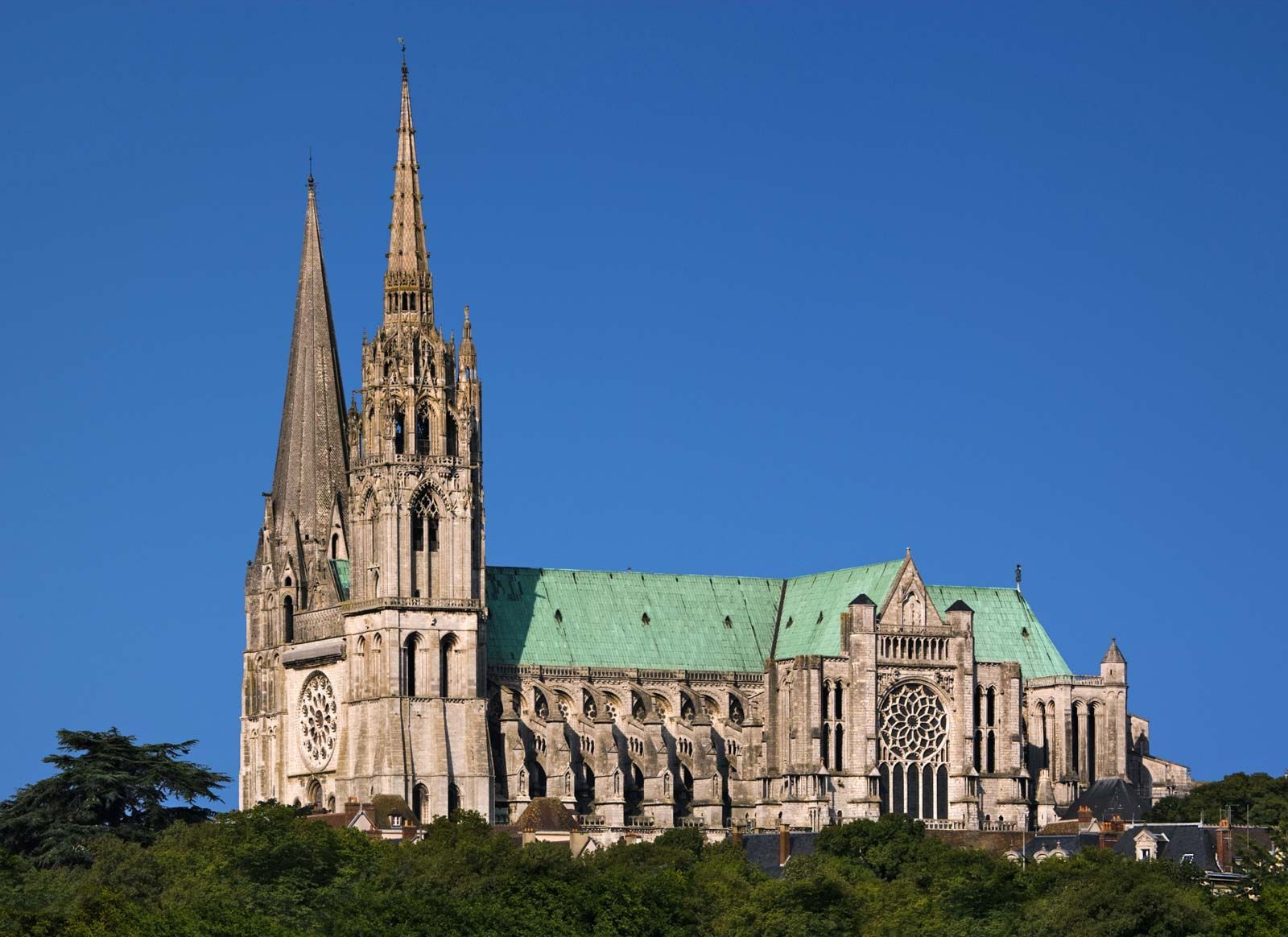
Gothic architecture is a style that emerged in the 12th century and flourished until the 16th century. Known for its pointed arches, ribbed vaults, and flying buttresses, this architectural style aimed to create awe-inspiring structures that reached towards the heavens. Cathedrals like Notre-Dame in Paris and Chartres in France are prime examples of this grand design. But what makes Gothic architecture so special? Its intricate details and innovative engineering techniques not only transformed the way buildings were constructed but also how people experienced space and light. Ready to explore 26 fascinating facts about this iconic style? Let's dive in!
Key Takeaways:
- Gothic architecture, born in 12th century France, features pointed arches, ribbed vaults, flying buttresses, stained glass, and intricate tracery. It spread across Europe, evolving into distinct regional styles and inspiring a 19th-century revival.
- Famous Gothic cathedrals like Notre-Dame de Paris and Cologne Cathedral showcase the innovative features of Gothic architecture, including stunning stained glass windows and elaborate tracery. The style's influence continued into the 19th century with the Gothic Revival movement.
Origins of Gothic Architecture
Gothic architecture emerged during the High and Late Middle Ages. It evolved from Romanesque architecture and was succeeded by Renaissance architecture.
- Gothic architecture began in the 12th century in France.
- The term "Gothic" was initially a derogatory term used by Renaissance critics.
- Abbot Suger is often credited with pioneering Gothic architecture at the Basilica of Saint-Denis.
Key Features of Gothic Architecture
Gothic architecture is known for its distinct and innovative features. These elements not only defined the style but also allowed for the creation of some of the most iconic structures in history.
- Pointed arches are a hallmark of Gothic architecture, providing both strength and aesthetic appeal.
- Ribbed vaults allowed for higher and more complex ceiling designs.
- Flying buttresses helped support walls, enabling the construction of taller buildings with larger windows.
- Stained glass windows were used extensively, often depicting biblical scenes and stories.
- Gargoyles served both decorative and practical purposes, acting as water spouts to direct rainwater away from buildings.
- Tracery, the stonework elements that support the glass in a Gothic window, became increasingly elaborate over time.
Famous Gothic Cathedrals
Many of the world's most famous cathedrals were built in the Gothic style. These structures are not only religious centers but also masterpieces of medieval engineering and art.
- Notre-Dame de Paris is one of the most famous examples of Gothic architecture.
- Chartres Cathedral is renowned for its stunning stained glass windows.
- The Cologne Cathedral in Germany took over 600 years to complete.
- Milan Cathedral, or Duomo di Milano, is the largest Gothic cathedral in Italy.
- Westminster Abbey in London, though primarily known for its association with British royalty, is a prime example of Gothic architecture.
Gothic Architecture in Different Regions
While Gothic architecture began in France, it spread across Europe, adapting to local styles and traditions.
- In England, Gothic architecture is often referred to as "Perpendicular Gothic" due to its emphasis on vertical lines.
- Spanish Gothic architecture, known as "Isabelline Gothic," often incorporates elements of Moorish design.
- In Germany, the "Brick Gothic" style emerged, characterized by the use of red brick instead of stone.
- Italian Gothic architecture is noted for its use of polychrome marble and elaborate facades.
The Evolution of Gothic Architecture
Gothic architecture evolved over several centuries, leading to the development of distinct phases and styles.
- Early Gothic architecture, also known as "Lancet Gothic," is characterized by pointed arches and minimal ornamentation.
- High Gothic architecture saw the introduction of more elaborate designs and larger windows.
- Rayonnant Gothic, or "Radiant Gothic," is noted for its emphasis on light and the use of intricate window tracery.
- Flamboyant Gothic, the final phase, is characterized by highly decorative and intricate designs.
Gothic Revival Architecture
The influence of Gothic architecture did not end in the Middle Ages. The 19th century saw a resurgence of interest in the style, known as the Gothic Revival.
- The Gothic Revival began in England in the late 18th century.
- Architect Augustus Pugin was a leading figure in the Gothic Revival movement.
- The Palace of Westminster, home to the British Parliament, is a notable example of Gothic Revival architecture.
- In the United States, the Gothic Revival style was popular for churches, universities, and even private homes.
Gothic Architecture's Lasting Impact
Gothic architecture isn't just about pointed arches and flying buttresses. It represents a significant shift in design, reflecting the era's cultural and technological advancements. This style, emerging in the 12th century, brought innovations like ribbed vaults and large stained glass windows, transforming how buildings looked and functioned. These structures weren't just places of worship; they were community centers, symbols of civic pride, and marvels of engineering.
The influence of Gothic architecture extends beyond its time, inspiring countless architects and designers. Its principles can be seen in modern buildings, proving its timeless appeal. Whether you're an architecture enthusiast or just curious, understanding Gothic architecture offers a glimpse into a pivotal period in history. It shows how art, technology, and society intertwine, leaving a legacy that continues to inspire and awe.
Frequently Asked Questions
Was this page helpful?
Our commitment to delivering trustworthy and engaging content is at the heart of what we do. Each fact on our site is contributed by real users like you, bringing a wealth of diverse insights and information. To ensure the highest standards of accuracy and reliability, our dedicated editors meticulously review each submission. This process guarantees that the facts we share are not only fascinating but also credible. Trust in our commitment to quality and authenticity as you explore and learn with us.
